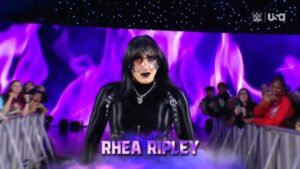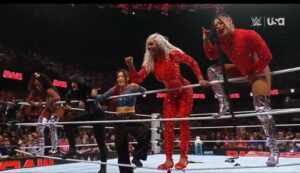It’s been a long time since “The World’s Most Dangerous Man” Ken Shamrock set foot in a professional wrestling ring. It was in August of 2009, in a one-off against Jimmy Jacobs at Juggalo Championship Wrestling (JCW) at Bloodymania III in a match that also featured another UFC Hall of Famer, Dan “The Beast” Severn, as the guest referee. Before that match, his last encounter was five years earlier, in 2004. But on Friday night in Burwood East, Victoria, Australia, at Battle Championship Wrestling (BCW), Ken Shamrock made his return to pro wrestling and not only wrestled in two matches but emerged with his first championship gold since winning the NWA World Heavyweight Championship in 2002.
It felt great to be back doing what I love at #BCW25! Thank you to everyone who came out to watch the show! This is only the beginning! #KenShamrock #TheWorldsMostDangerousMan pic.twitter.com/HNnto1XmJl
— KEN SHAMROCK (@ShamrockKen) November 30, 2018
Ken Shamrock was booked to face 10+ year Aussie indie veteran Gabriel Wolfe, defeating Wolfe when he caught “The Suplex Machine” in his famous ankle lock submission. Following the match, Wolfe – who also happened to be one half of the BCW Tag Team Champions with Tome Filip – attacked Shamrock, using his tag belt as a weapon. Shamrock proceeded to challenge Wolfe to another match, this time a tag match, with the titles on the line. Wolfe was unable to call on his regular partner, Tome Filip (who is also one half of the Aussie tag team The Filip Brothers, with his real-life brother Stevie) though. Filip was on a BCW suspension – in his place, Wolfe called out Big Cuz to act as his replacement. Shamrock called out his new friend, former Lance Storm pupil Carlo Cannon, who spent his early years with Calgary’s Stampede Wrestling. Since his debut in the mid-2000s, Cannon returned to his native Australia where he became a star with Melbourne City Wrestling (MCW), where he’s a former MCW Heavyweight Champion, as well as Explosive Pro (EPW), Wrestle Rampage, Riot City Wrestling (RCW) and more. By the end of the second match, Shamrock once again got Wolfe in his ankle lock and Shamrock and Cannon were new BCW Tag Team Champions.
Ken Shamrock

It marks a long road back to professional wrestling for Shamrock, to a sport he started in prior to his legendary MMA career. Ken Shamrock made his pro wrestling debut in 1989 in All Japan, primarily teaming with legendary NWA grappler Joe Malenko. He would return to the US and join George Scott‘s South Atlantic Pro Wrestling (SAPW), a short-lived promotion out of South Carolina, that was an early home for the likes of Dean Malenko, Rob Van Dam, Charles Wright (Godfather/Papa Shango) and others. It was Dean Malenko who sparked Shamrock’s interest in what would become MMA, by showing him tapes of Japanese matches of hard-hitting strikes and technical brawling – particularly a Young Lion from NJPW who had debuted a year before Ken Shamrock named Minoru Suzuki. Inspired by Suzuki’s matches, Shamrock headed back to Japan to join him during Suzuki’s excursion to the Universal Wrestling Federation (UWF). The two would form a long lasting friendship that would see them depart UWF and head to the stiffer hitting and shoot wrestling promotion, Pro Wrestling Fujiwara Gumi, run by New Japan legend Yoshiaki Fujiwara. Shamrock would wrestle with Gumi until 1993 when he and Suzuki got other ideas.
Alongside another popular shoot fighter and pro wrestling, Masakatsu Funaki – himself a former NJPW star who had gone to Gumi – the trio formed the promotion Pancrase (on the suggestion from a conversation with longtime New Japan trainer Karl Gotch, Suzuki’s mentor). With Fujiwara heading more in the direction of what would later be “sports entertainment”, the hard-hitting strong style of Suzuki, Funaki and Shamrock was being phased out, so the idea of starting their own promotion – going in the complete opposite direction – was intriguing. While it still had some staged affairs, Pancrase showcased many legitimate mixed martial arts fights and becoming one of the first MMA promotions. Pancrase’s first event held on September 21, 1993, beat UFC 1 to the airwaves by two months.
Shamrock would go 20-4 with Pancrase in his three years with the company, fighting such future MMA legends as Bas Rutten, trainer Matt Hume, and others, not to mention Suzuki and Funaki. Shamrock also debuted with UFC at UFC 1 that November 12, 1993, fighting twice that night – first in a win over Patrick Smith, before losing to Royce Gracie. It was Shamrock’s 4th and 5th fight since the first Pancrase event that September. Shamrock would on to become one of the UFC’s biggest stars in its formative years, with a huge draw against Gracie, then defeating Dan Severn for the UFC Superfight Championship. By 1997, he left the UFC – and MMA – to return to his first love, pro wrestling, only this time back to the US with the World Wrestling Federation (WWF).
“The World’s Most Dangerous Man” made his official WWF debut on April 7, 1997, in a No DQ squash match against Vernon White on Monday Night Raw (official debut, as he’d worked as enhancement back in 1989, losing to Barry Horowitz at a WWF House Show). He would go on to 3-year career with the WWF, that would see Shamrock work as a face and a heel, capturing the WWF Intercontinental Championship and WWF World Tag Team Championship alongside Big Bossman in The Corporation. His last match with the WWF was on an early episode of SmackDown, where he lost a First Blood match to new WWF signee Chris Jericho in the fall of 1999.
https://www.youtube.com/watch?v=-qFjCvQ7RlI
Shamrock returned briefly to MMA in 2000, working with UFC rival PRIDE. He returned to pro wrestling for a brief stint with upstart Total Nonstop Action (TNA, now IMPACT Wrestling), where he was crowned TNA’s first champion and new NWA World Heavyweight Champion (as TNA originally used the NWA titles). His run with TNA was short, from June to August of 2002, before he returned once again to MMA, this time returning to the UFC and the start of his storied rivalry with Tito Ortiz. He would do exhibition matches with NJPW in 2003 and 2004 – including one against New Japan newcomer Shinsuke Nakamura – but by the end of 2004, he was done once again with pro wrestling.

Since then – and apart from his 2009 one-off with JCW – Shamrock has drifted in and out of MMA, including his last two with Bellator – a 2015 loss to Kimbo Slice and a 2016 loss to old rival Royce Gracie, his last MMA fight. By the end, it was apparent that the 52-year-old former MMA pioneer was now a shadow of his former self. But now it’s 2018, and Shamrock has returned to pro wrestling at the age of 54, when ironically, now it’s his successors, Tito Ortiz and Chuck Liddell, making their returns to MMA (at 43 and 48 respectively). And while they have now fallen into the den of whispers that Shamrock endured years previous – of being past the expiration date for MMA competition – Shamrock has found redemption in the sport that started it all for him. Professional wrestling. And at 54 years old, has once again found wrestling gold around his waist.
If your an #mma or #wrestling fan my new book is a must have! I open up about my life, both highs & lows…and some of the lows will make your jaw drop! It was a crazy time! #KenShamrock #legend #pioneer #fighter #godfather #TheWorldsMostDangerousMan
Link: https://t.co/EEe8sqeEkf pic.twitter.com/LsjWAzp3GG— KEN SHAMROCK (@ShamrockKen) November 28, 2018






